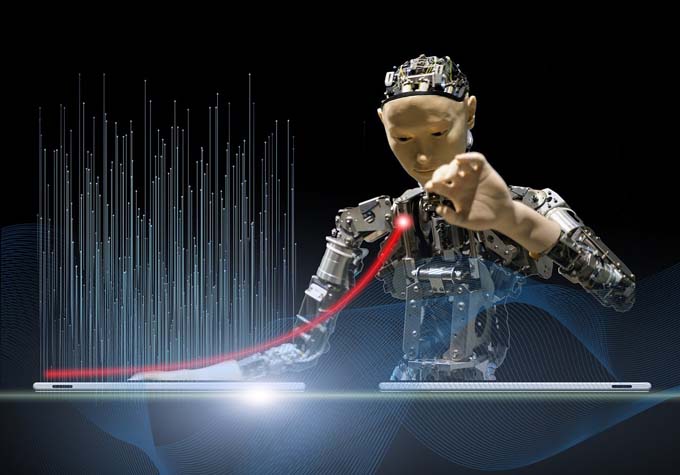AI and automation: prioritizing value and safety over speed
Artificial intelligence (AI) and automation have the potential to bring about almost unlimited changes in business dynamics. Product manufacturers should approach AI with caution and strategy and prioritize value and security over speed of development.

Cosima von Kries, Nintex Director, Solution Engineering EMEA, shows how responsible implementation of AI works and names four changes that could occur in four key areas in the future:
- Customers integrate AI directly into their automation systems
When thinking about the potential of AI-driven automation, the ultimate goal is to put the power of innovation directly into the hands of customers. A future is envisioned where users are not just consumers, but also active creators. They will be able to visualize a scenario and then design an intuitive workflow using generative AI. This will be driven by AI's ability to decipher documents, extract data and seamlessly integrate all of this into automated processes. This trend is expected to mark a decisive step in the evolution of business strategies, as AI is no longer seen as a standalone tool, but as an integral part of automated processes and their optimization.
- Significant improvement in the customer experience
With every new automation tool, there is a learning curve. Traditionally, this has been a barrier between the user and optimal productivity. With AI, you can find new learning processes that flatten this curve and make the whole process much more enjoyable and user-friendly. For example, an AI-powered helper is a personalized assistant that ensures end users find what they need when they need it. This speeds up the learning process and reduces initial frustration.
- Use of AI to optimize internal processes
AI is having a transformative impact on businesses. By incorporating AI tools into workflows - from the creation of help files to the intricate nuances of coding - a new era of precision and efficiency has been ushered in. It's not about having fewer employees, it's about working with employees more and more efficiently. The goal is to accelerate growth and resilience through focus.
- Applications of AI in product functions
The point of direct integration of AI in product functions is key as it promises to accelerate time-to-value for customers, primarily through AI-based design-time capabilities.
Automation is aimed at a wide range of users: from business professionals and developers to IT experts and solution partners. Current automation tools are used to handle process documentation, define and monitor processes, collaborate on workflow designs and much more. For almost all of these activities, AI capabilities can be integrated to optimize user efficiency by leveraging relevant context.
The most exciting areas of current AI innovation include process management, automation cloud integration and app development. In all of these areas, the need for manual creation can be further reduced and significant leaps in efficiency can be achieved.
Responsible implementation of AI
While utilizing the numerous possibilities of AI, it is essential to rely on the basic AI principles.
People at the center of design
We can all attest to the transformative power of AI. But AI-powered automation is a tool, not the end goal. Every design, every strategy should be executed with the end user in mind. By weaving the human element into their AI fabric, companies can ensure relatability, loyalty and true effectiveness. When AI is used in products to speed up the design/creation of processes, workflows, etc., the new AI assistants always give control back to the designer - i.e. the human. The AI acts as an assistant (not an oracle), and the human designer has the final say on what is published, tested and released.
Promoting transparency and accountability
Transparency is not just a buzzword, it is an obligation. As you continue to push the boundaries of artificial intelligence, you should ensure that all stakeholders - whether partners or customers - understand the intricacies of AI tools. It's about fostering a collaborative, informed ecosystem.
Governance and ethics
Governance and ethics should be an operational compass. It is important to take every step of the AI journey with a deep sense of responsibility. It's not just about developing tools, but also about setting standards, ensuring fairness and preventing bias.
Protection of privacy and security
Data is the new gold, and its inviolability is of the utmost importance. Every algorithm and every tool must be equipped with robust security measures so as not to jeopardize user trust.
Combining AI and automation in a meaningful way
A mixture of enthusiasm and caution should characterize all developments. After all, it is about harnessing the promise of AI while remaining rooted in ethics, responsibility and humanity. The future is promising if it is accompanied by a commitment to added value and safety for customers.
Source: www.nintex.de
This article originally appeared on m-q.ch - https://www.m-q.ch/de/ki-und-automatisierung-wert-und-sicherheit-ueber-geschwindigkeit-stellen/









